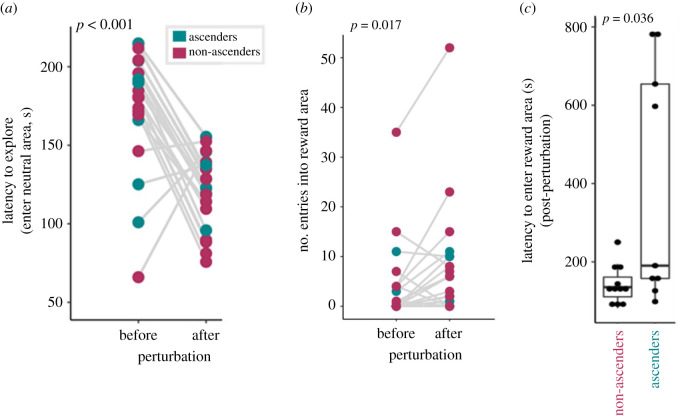Figure 4.
After social perturbation individuals were quicker to explore the apparatus in the spatial task (p < 0.001, a) and make more entries into the rewarded area (p = 0.017, b) compared to the baseline assessment before perturbation. When assessed again following perturbation, males that ascended in status during the perturbation exhibit significantly longer latencies to enter the reward area than those who did not ascend (p = 0.036, c). (Online version in colour.)

